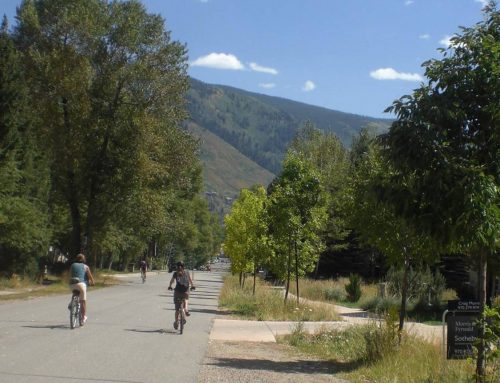Steve Mouzon, my colleague over at Original Green wrote a great blog that can be found at the link in his introduction:
The basic rules of thumb of street tree design are really simple; it’s amazing how often cities and developers don’t get them right. Thoughts?
Steve
I responded with this:
Great blog Steve. A couple of thoughts from an engineer:
You recommended planting street trees at the lot line. We engineers VERY often put water or sewer services at the lot lines because we can double up on the pipe (two meters on one service line) and/or the trench. In fact, doubled sewer and water services are often placed at alternate lot lines. So that should be checked before planting trees there.
Root volume is important. There is a natural volume ratio of root to canopy. Life does find a way, but designers should try to help provide a root volume pathway that will help a tree thrive to a longer and larger maturity. Today’s large machinery and geotechnical specifications result in soil compaction far greater than a few decades ago, so some of those large old legacy trees that you see in streets had a head start over today’s plantings. It doesn’t mean, though, that the surface planter area needs to be the size of the mature canopy – just try to provide a path for roots that is at 85% compaction instead of 95%.
We often peer only at the surface, but a key to tree vitality requires us to extend that surface view to a thick mat – then you will see the entire picture.
A rule of thumb is that tree roots will not penetrate soils compacted to greater than 85%.
Most concrete sidewalk specs call for 95% compaction – in order to cover worst case scenarios for the pavement stability. However, research and experience show that most sidewalk failures occur due to differential settlement; and that uniform compaction is more important in preventing differential settlement than compaction percentage is, and also that a few inches of granular material between the soil and the concrete helps alleviate differential settlement. A basic protocol as shown in the sketch and described below:
1. Try to not over-compact existing soils. Use smaller equipment in those areas when possible.
2. In building up soils to accept tree roots compact to 85%, and do it in layers of 8-12 inches at a time of friable soil (optimum moisture content) to ensure uniform compaction.
3. Use a few inches of pea-sized fractured rock under sidewalks.
4. Concrete sidewalk thickness should be at least 4 inches, and consist of high quality concrete that is properly cured.
5. Use fiber-reinforced concrete to increase the tensile strength to help the sidewalk bridge over anomalies in the base. Very little extra material cost, no extra installation cost. Try to avoid adding metal rebar or mesh to concrete because over time the metal gets moist, corrodes and weakens the concrete.




